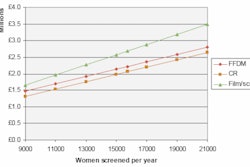
NEW YORK (Reuters Health), Sep 17 - The absence of residual vein thrombosis (RVT) following a first episode of deep vein thrombosis (DVT) is a reliable indicator of which patients can safely stop oral anticoagulation therapy, according to a randomized, prospective, multicenter study by Italian researchers reported in the August 1 issue of Blood.
"The most important finding of our study is that patients without RVT can be treated for a short period, three months," Dr. Sergio Siragusa, of the Università degli Studi di Palermo, told Reuters Health.
Long-term anticoagulant therapy is highly effective in preventing recurrence of venous thromboembolism, but the increased risk of bleeding can undermine the benefits, Siragusa and colleagues note in their paper, and the optimal duration of the therapy has not been established.
The study group consisted of 258 patients who had experienced symptomatic proximal DVT (either idiopathic or provoked) and who, after three months of oral anticoagulation therapy, underwent compression ultrasonography to determine whether they had RVT. RVT was defined as a thrombus occupying more than 40% of the vein diameter.
The 78 patients without RVT stopped oral anticoagulation therapy, while those with RVT were randomized into two groups: one group received oral anticoagulation therapy for an additional nine months (for a total of 12 months), and the other stopped anticoagulation therapy.
Rates of recurrence of venous thromboembolism over an additional 12 months of follow-up were 23.3% overall among patients with RVT, 19.3% in patients with RVT with additional oral anticoagulation therapy, 27.2% in patients with RVT with no additional anticoagulation therapy, and only 1.3% in patients without RVT (p = 0.002 versus all patients with RVT).
The difference in the RVT group between those who received additional oral anticoagulation therapy and those who did not was not significant.
No difference as to outcomes was found between patients with provoked DVT and those with idiopathic DVT. "The most relevant features of our study," the authors write, "were that we used a simple and reproducible imaging method for both idiopathic and provoked DVTs."
In addition, the researchers highlight the fact that "at least 20% of the recurrent thromboses occurred in the contralateral leg, a finding that supports the hypothesis that RVT can indicate the presence of an underlying prothrombotic state triggering a sustained hypercoagulability."
Further, consistent with a study published in 2001, they found that prolonged oral anticoagulation therapy in patients with RVT only delayed recurrences of thromboembolism and did not significantly reduce the risk of recurrence.
By Scott Baltic
Blood 2008;112:511-515.
Last Updated: 2008-09-16 15:49:44 -0400 (Reuters Health)
Related Reading
New venous thromboembolism diagnosis guidelines specify imaging's role, February 16, 2007
Copyright © 2008 Reuters Limited. All rights reserved. Republication or redistribution of Reuters content, including by framing or similar means, is expressly prohibited without the prior written consent of Reuters. Reuters shall not be liable for any errors or delays in the content, or for any actions taken in reliance thereon. Reuters and the Reuters sphere logo are registered trademarks and trademarks of the Reuters group of companies around the world.

















